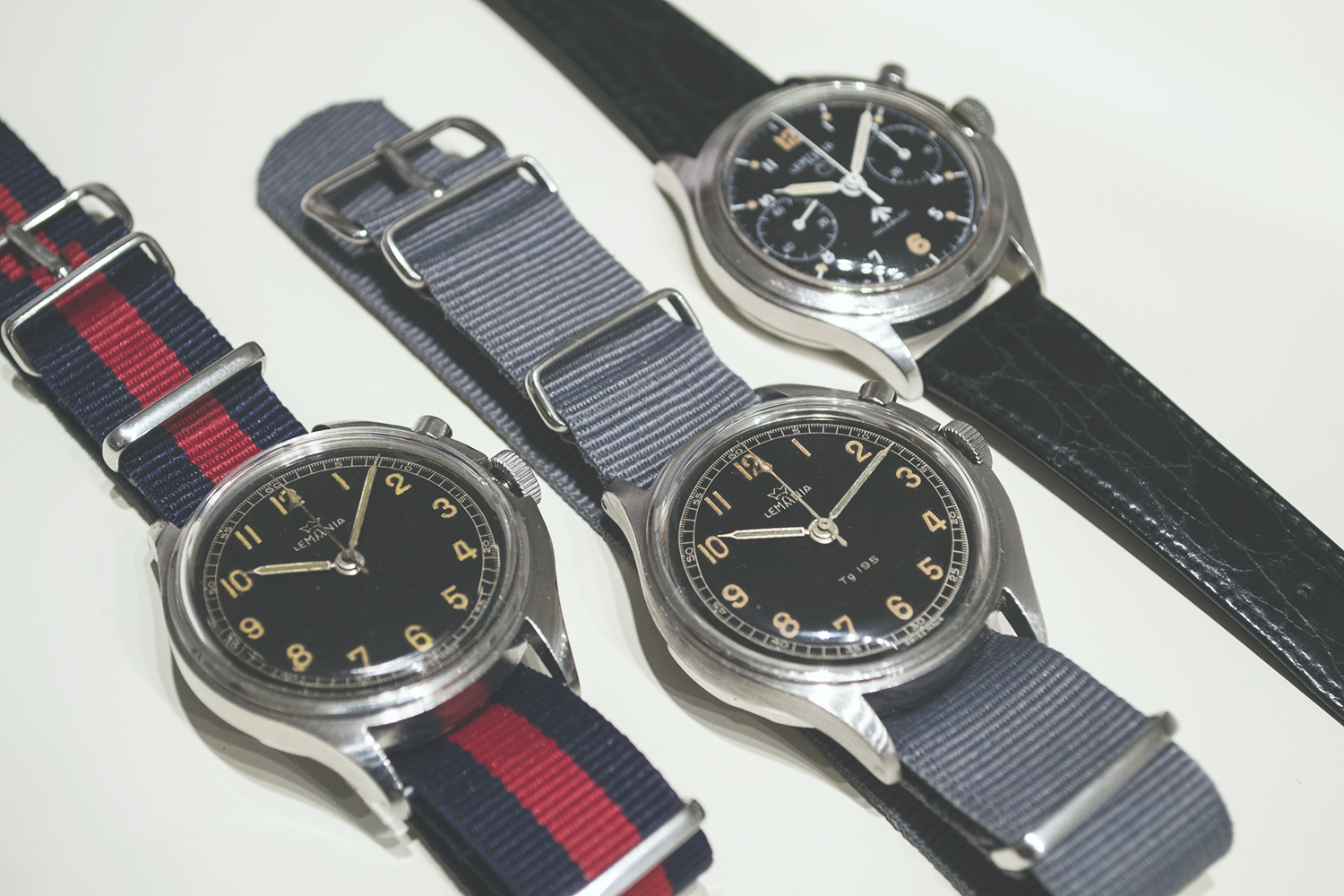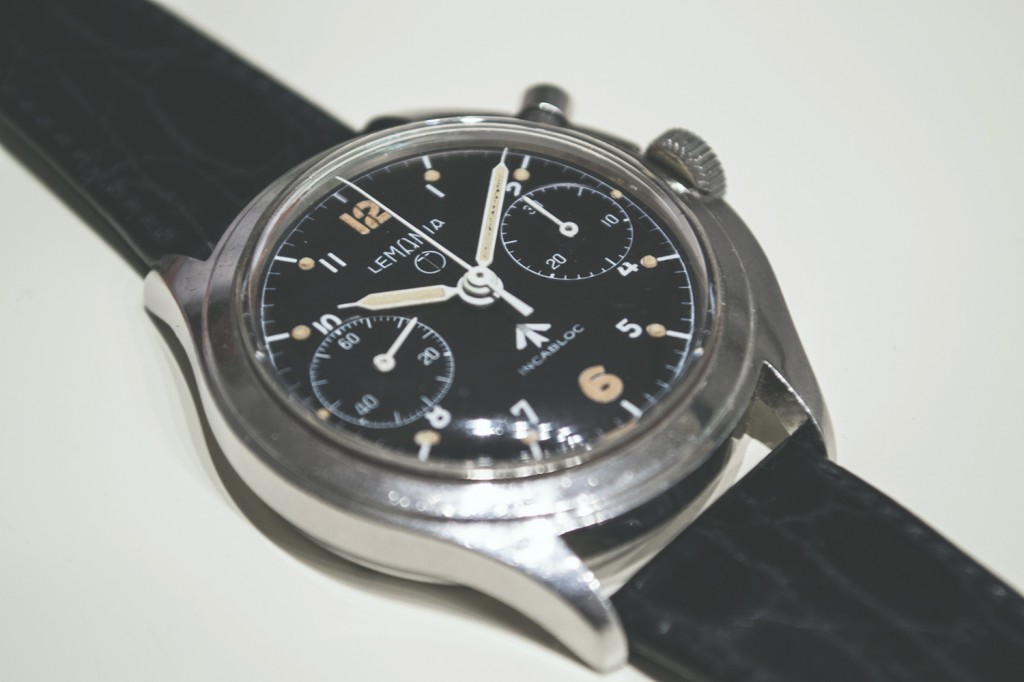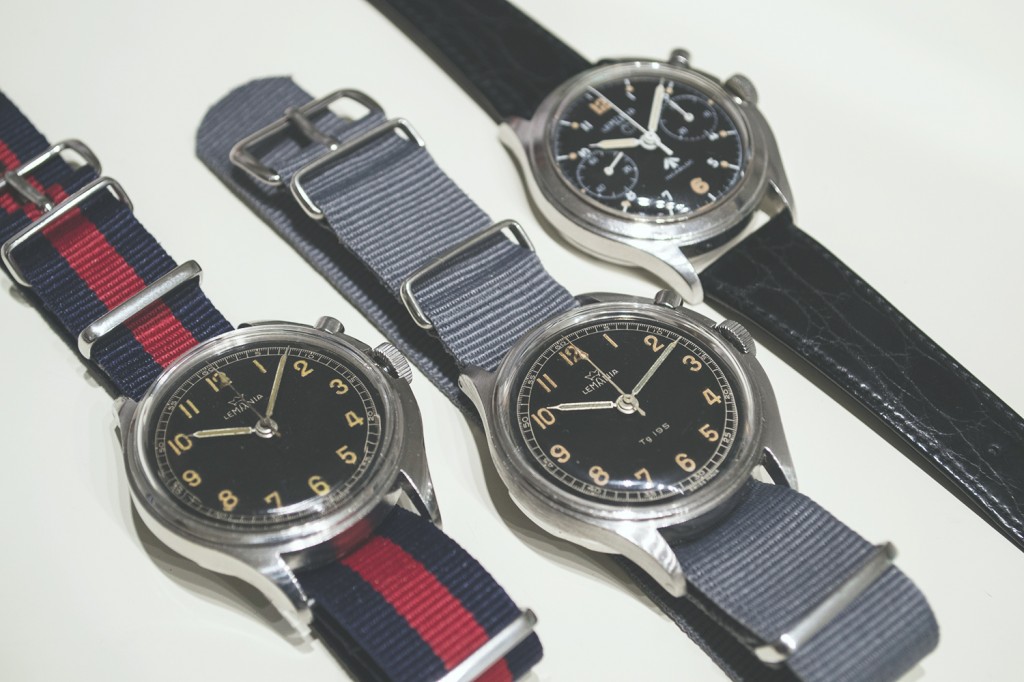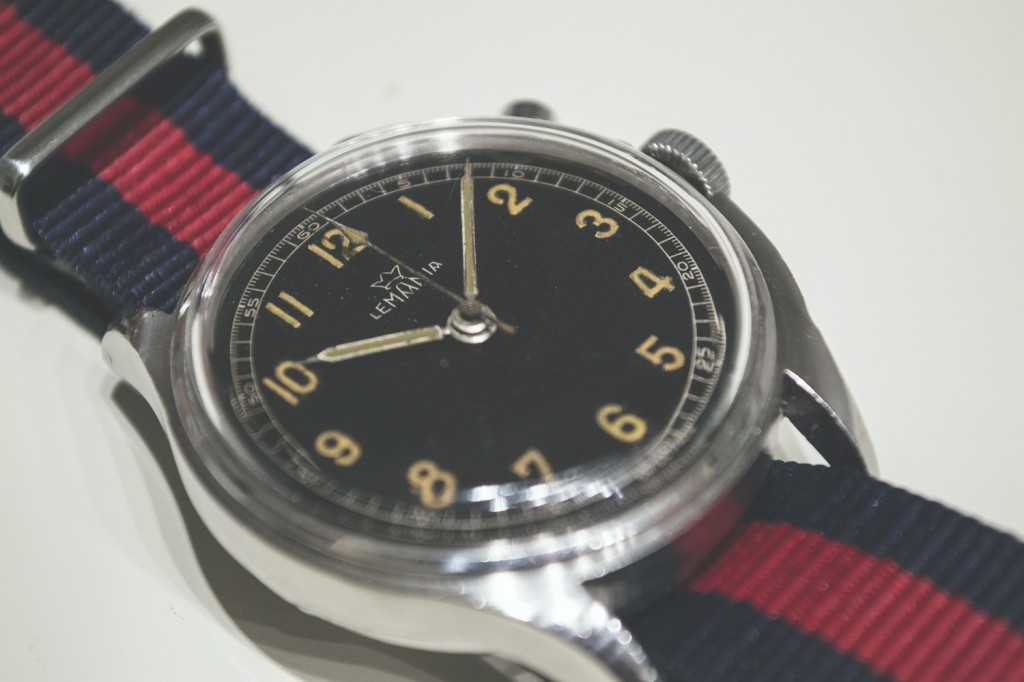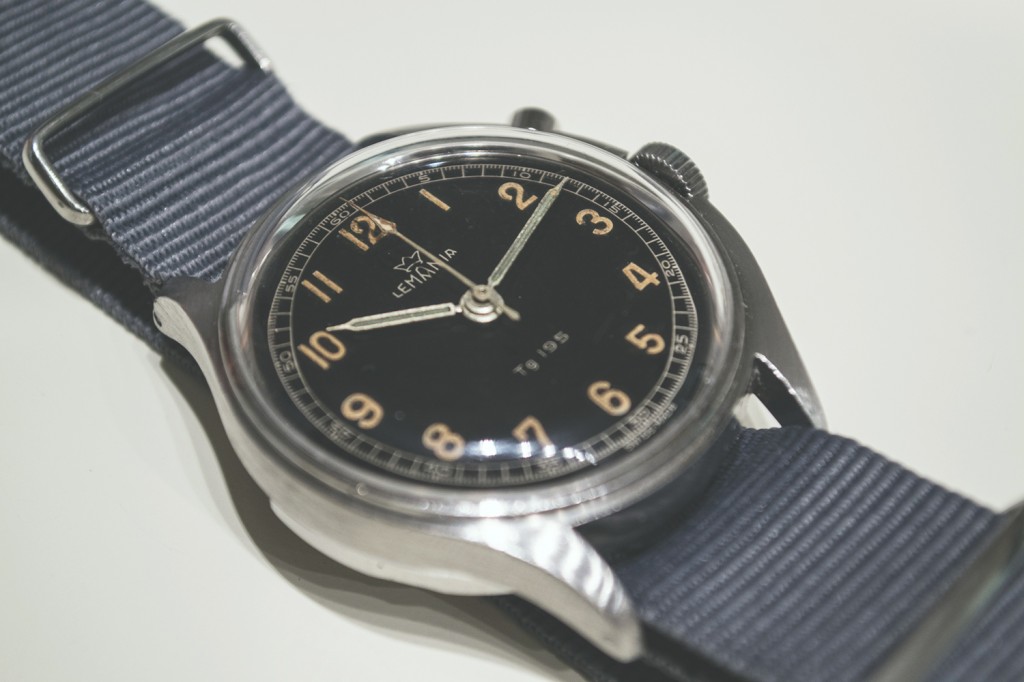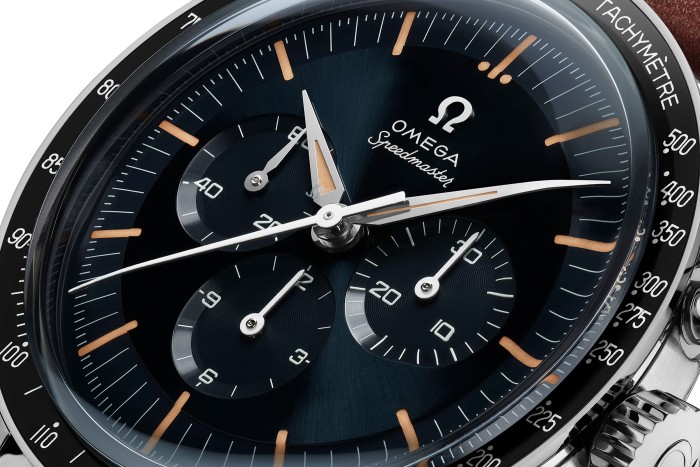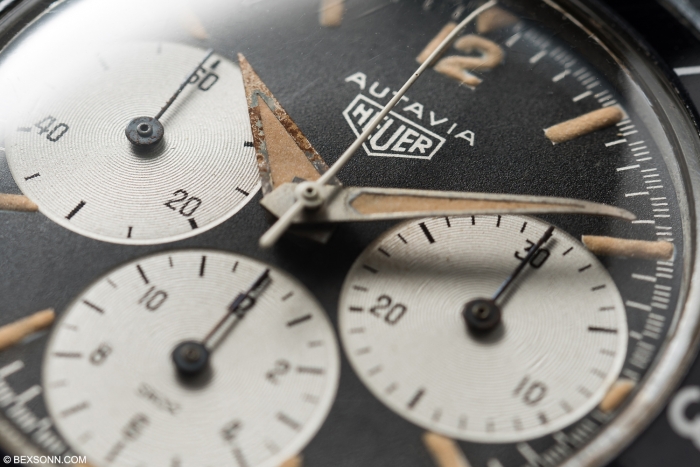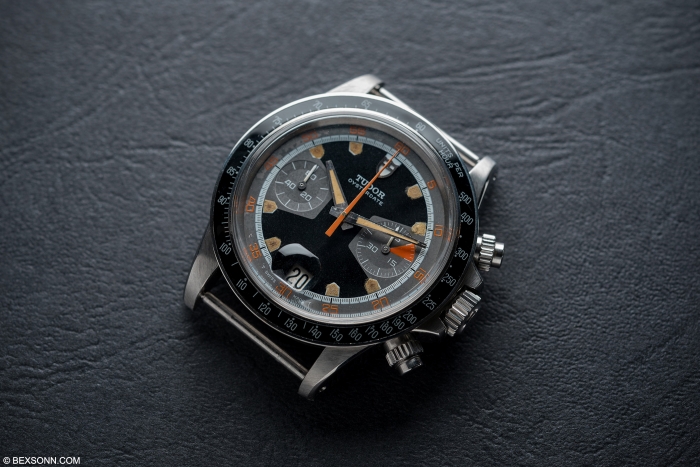Lemania British Navy Issued Mono-pusher Chronograph – Now, for those of you who know very little about Lemania I shall touch on a brief bit of history of this Swiss based horologist, founded in 1884 by Alfred Lugrin. Lemania are one of the first watch companies to have graced the market with chronograph movements. In fact, most Pre-second World War Omegas used Lemania movements and this relationship eventually culminated in the Lemania 2310 Calibre – more famously known as the Omega 321 Calibre, used in the legendary “Moonwatch”. Lemania still, even to this day, hold a very high reputation in the watch industry for collectors and aficionados alike.
This particular Lemania Military Chronograph above was only issued to the British Royal Navy, it’s a calibre 2220 4th generation of this model, that was first introduced in the 1950’s. It was initially designed to be worn by Aircrew in the RAF, mostly the navigators, and was produced from around 1965 – 1976 and in my humble opinion, the most gorgeous of the lot. The two sub dial registers add more depth to the face of the timepiece and you’ve got to love those syringe hour and minute markers. There is also a super rare white dial variant of this model, made for submarine crew.
Now, probably the most important thing above all is the condition. They’re all un-polished and still have the little dinks and marks, which shows they were true workhorses for their warzone navigators, making them worth every single penny.
The Lemania on the left was the very first variant and the Lemania in the centre is the second variant, both made for the Swedish Military. The third and fourth iterations were made for the British Royal Navy. However, the fourth iteration was the last variant before the case shape changed.
So, you can see the evolution of the watch and how it slowly became this beautiful timepiece before you. The first iteration was slightly different, simply because it was one of the first 500 ever made for the Swedish Military. However, the third iteration was the most popular version which was made later.
On the first and second, which use the 2225 calibre movement, when the pusher is pressed the crown pops out which enabled the troops to synchronise watches, or in other terms a hacking-seconds hand. This function was used to identify whether the timepiece was a Military issued one. All variations of these Lemania Military watches used water resistant cases, which was popular and became vogue in the 1950’s. They all had fixed lugs meaning they were supposed to be worn on MoD (NATO) straps, with the exception of the last one produced which actually has spring bars. Surprisingly enough these watches actually measured 40mm in size, excluding the crown. They all came with anti-magnetic dust covers and you may also be able to see in the pictures that as they evolved the cases got a little bit thicker. This was because Lemania also wanted to make the timepieces even more water-resistant but it also made the watch more comfortable to wear, simply because it sat a little more proud on the wrist. You’ll also notice on the 2nd generation Lemania introduced a marking on the dial Tg 195. This Tg marking stands for “Giving time” (in Swedish Tid Givare).
Its watches like these that make me so curious about the vintage watch world. If vintage timepieces like these could talk, wow, I’m sure they’d be able to tell a hell of a story. The other good thing about these timepieces is that, if you can find them, they are very affordable. You can pick the Swedish issued versions up for between £1300 – 1500 and the British issued version for between £1700 – 2000, depending on condition, and even in some cases the location…
